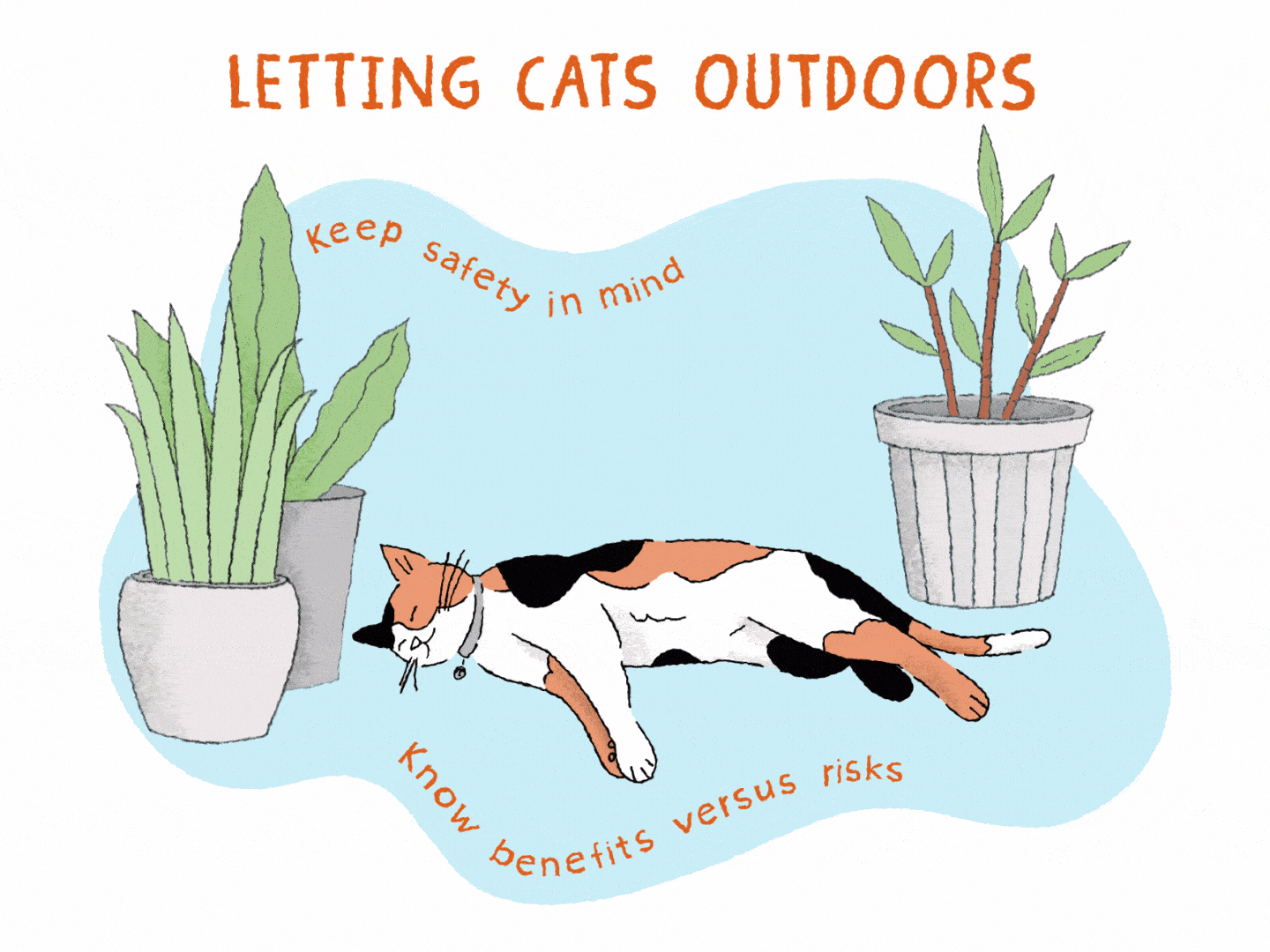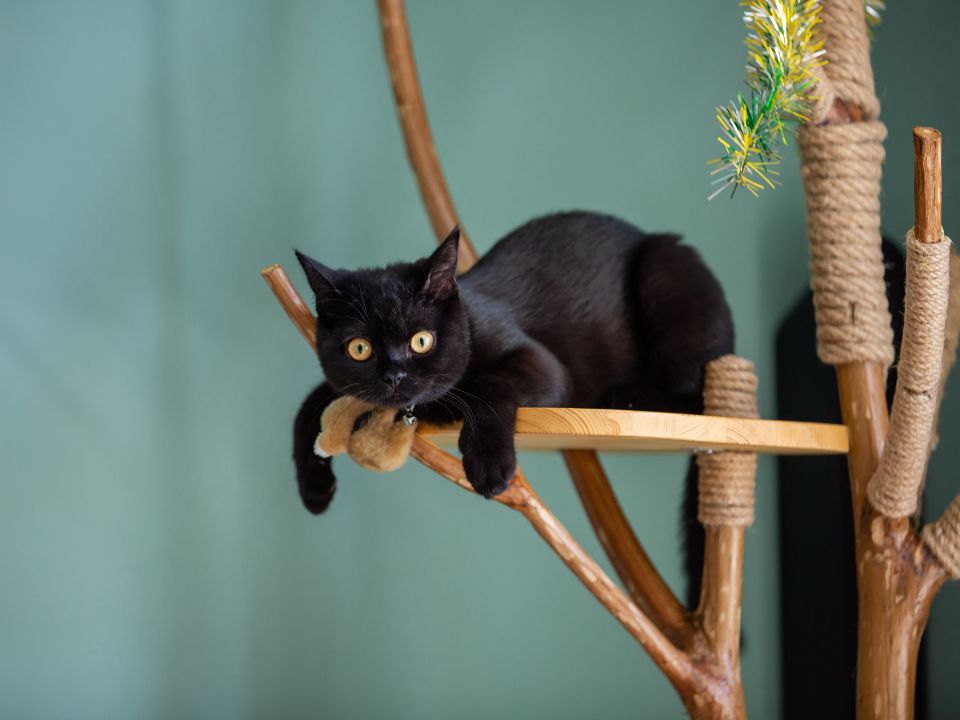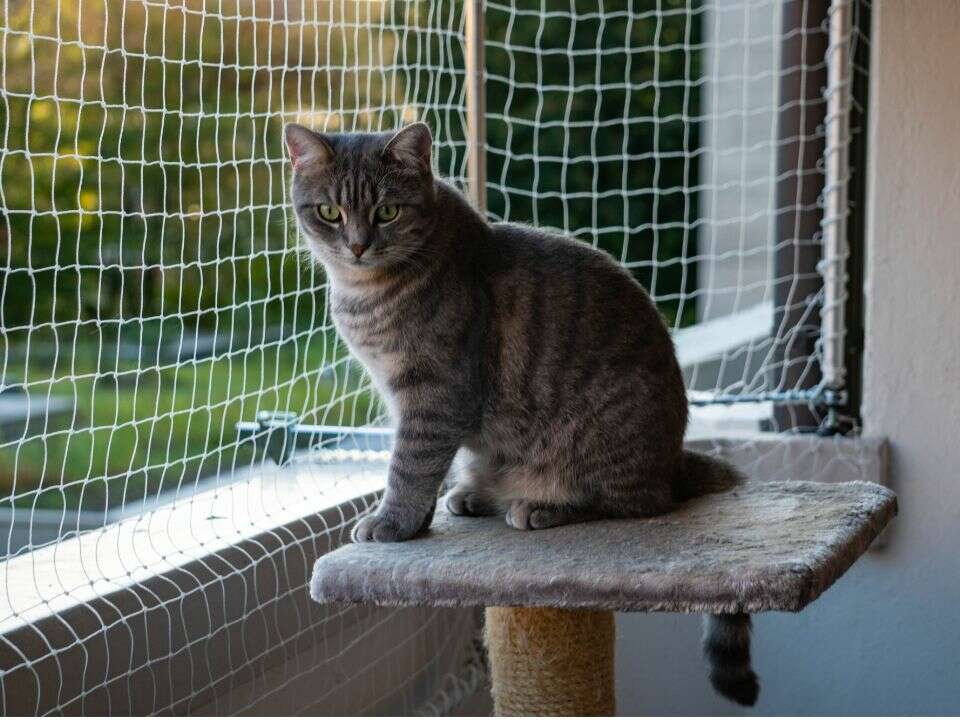pros and cons of indoor vs. outdoor cats
Should you let your cat go outside?
Some cats are homebodies who seem perfectly content to stay inside. Others will meow, wail, or even dash frantically for the door so they can explore the great outdoors. Trying to decide if your cat should be strictly indoor, only outdoor, or a combo of the two? Here’s some info about cat safety, health, and happiness to keep in mind.

Indoor or outdoor, make sure to help protect your kitty against disease, and make it easier for someone to return them to you safely. Every cat needs their twice-yearly vet exams, plus routine vaccinations, recommended parasite control, a collar with a name tag, and a current microchip.
Reasons to keep your cat indoors
Sometimes you don’t have a choice about keeping your kitty inside, like if you live in a city apartment with no outdoor access. It gets more complicated if your cat actually could go outside — but you’re just not sure they should. Here’s what to consider for your own special cat.
Pros:
- Safety: Indoor cats are less likely to run afoul of outdoor hazards like cars, dogs, territorial or feral cats, or roaming wild animals.
- Health issues: Cats kept inside aren’t as exposed to fleas, ticks, or sick or unvaccinated cats.
- Grooming: If your cat is long-haired, an inside life can help keep their coat free of dirt, leaves, and debris.
- Environmental impact: Indoor time can help prevent your cat from killing birds or other vulnerable wildlife.
- More together time: You may be more likely to spot any behavioral issues or health problems if you’re spending a lot of time with your kitty at home.
Cons:
- Less exercise: Indoor cats typically get less exercise and are more prone to being overweight or obese.
- Indoor spraying and scratching: A cat that’s only indoors may claw up chairs or mark furniture or walls as a sign of stress.
- Lack of street smarts: An inside-only kittyBAE that finds themselves outside may panic and dash into danger.
- Stress: Watching outdoor cats stroll past, or having them pee near “their” house, can be very stressful for an indoor cat.
- Boredom: A bored indoor cat can easily become moody or destructive.
Help your indoor cat get fun and exercise
If you have an indoor cat, make sure to enrich their life with lots of kitty-based fun. Start with a scratching post and interactive toys. An indoor cat tree is good for climbing and may come with fun little hidey-holes for your cat to explore. Provide cardboard boxes or bags (with the handles cut) for them to pounce inside.
You can even give them safe access to the outdoors via a screened-in patio or window sill. Your kittyBAE can get a lot of fun out of any perch where they can watch a bird feeder or squirrels. Another option is a small screened-in “catio” built into a window, which allows your cat to lie and bask in the sun.

Banfield believes cat claws are important, and does not support the elective declawing of cats. See our declaw statement
Thinking about letting your cat spend time outdoors?
Before you open that door, talk to your veterinary team. They can answer questions and discuss the risks and benefits for your particular pet.
Pros:
- Healthier weights: Outdoor cats typically get more exercise, which reduces their risk for obesity.
- Outdoor stimulation: Being outdoors provides an ever-changing environment to explore, climb, sniff, and lounge on, which may help reduce behavior issues.
Cons:
- Physical danger: Outdoor cats are at risk from a lot of stuff, including predators, dogs, cars, territorial or feral cats, and wild animals. And they can encounter toxic chemicals in garages or on the street.
- Disease: Cats that are let outdoors may be exposed to serious diseases like FIV, feline leukemia, rabies, and more.
- Parasites: An outdoor cat can pick up fleas, ticks, intestinal parasites, and other icks.
- Physical risks: Rescuing cats stranded in trees is a real thing that actually happens.
- Environmental impact of their predator life: Pet cats kill an astounding number of birds every year, contributing to a known environmental crisis. As well as unwanted presents of dead creatures on your pillow.
Health and safety tips for outdoor cats
Because outdoor cats are exposed to outdoor risks, you want to help protect them as much as possible. This always includes vaccinations, parasite control, a good collar and ID tag, and having them microchipped. But it also means checking in with them when they come home (like for dinner). Watch for new behaviors or other signs that your cat may need veterinary care. Stroke them and give them attention — a great way to connect with your own special cat.
Even if your cat only goes out occasionally, there are other factors to consider. Spaying or neutering can help to prevent roaming, catfights, and litters of unwanted kittens. If your kittyBAE is a hunter, please look into bells or other bird-warning solutions to help protect our flying friends.
Indoors or out, all cats need delicious fresh water, nutritious food, and clean kitty litter. Make sure you give your cat a safe, dry shelter outside for bad weather, like in a shed or basement.


How Banfield can help
Your veterinary team is here for wellness care that helps to keep your kitty healthy and happy. That starts with twice-yearly exams, routinely-recommended vaccinations, effective parasite control, and much more. If you have any questions, or spot any issues with your cat — whether they’re indoors or outdoors — please reach out. We’re here to help.
 Mites and mange
Mites and mange Podcast - Not Just Fluff
Podcast - Not Just Fluff
